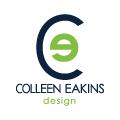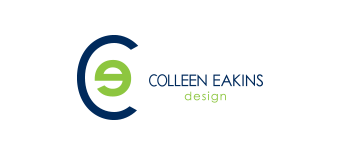You have started a business, developed a new product or you are an established business that does not have a web presence. You know that in order to compete in today’s technologically driven landscape; you need a website. The problem? You do not know where to start, what you need or what it even means to have a website. Clients tell me all of the time during the course of their web projects, that they never really realized what all goes into having a website. They just knew that they needed one, but did not realize what that would entail. The goal of this article is to provide some basic and general information to arm you with the knowledge you need to know.
The Basics
First, let’s start with the basics. When you view a website from your computer or mobile device, there is a lot more going on than just what you see on screen. It’s kind of like macaroni and cheese. When you see it sitting in front of you in all of it’s ooey, gooey, goodness; you rarely think about the components and the time and effort that was put into making what you see and are about to taste. That is unless you are like me, and you are calculating how many extra miles and reps you will need to put in, to keep your left thigh from enlarging. I digress. A website is the same way, just without the fitness calculations.
A website is comprised of files that contain code. The code in those files dictate what you see on screen. They dictate where images are placed, where forms and buttons go and how they should behave and the text that you see on screen. There are also image files and files that even dictate the overall styling of colors, fonts, etc for the entire site.
These files need a place to live, much in the same way that your couch, bed, pots and pans need a home or dwelling place. The dwelling place of your files is on a server with a “host.” This is also known as web hosting.
The final component to all of this is the domain name or web address. When you view an advertisement from a company and they list their web address as www.CompanyName.com, you are looking at and typing in their domain name.
My analogy for all of this (I am the self proclaimed queen of analogies) is that a website is like your home. Your home has a physical street address where the actual structure lies. Inside of that structure are all of your belongings. A domain name is like your physical street address; it is the virtual street address for your website. Web Hosting (sometimes just referred to as “hosting”) is the structure that resides at that virtual address; just like your home’s physical structure. The files that compose and control the visual representation of your website are like your belongings.
Where to Purchase Domain Names & Web Hosting?
Now that we have covered the basics, where and how do you obtain a domain name, web hosting and create these files? What are your options? There are a ton of options and solutions available to you. Some cost a little, some may cost a lot depending on your needs and technical adeptness.
For domain names and web hosting, there are companies that only provide domain name registration (purchase) or web hosting and companies that provide both. My personal favorite at the moment is Host Gator, which provides both web hosting and domain name registration. I wrote about my experience with them and why I love them so much here. Since the writing of that post, I am still a happy and satisfied customer.
[symple_accordion]
[symple_accordion_section title=”Web Hosting + Domain Name Registration Companies:”]
[/symple_accordion_section]
[symple_accordion_section title=”Domain Name Only Registrars:”]
- NameCheap.com
- DomainNames.com
[/symple_accordion_section]
[symple_accordion_section title=”Web Hosting Only Companies:”]
[/symple_accordion_section]
[/symple_accordion]
I always recommend that my clients make the purchase themselves for domain names and web hosting, because it is in their best interest. It is definitely easier on them if I make the purchase for their domain name, but then I am the registered owner of that domain name and address. Yes, I am an honest person, but what if I became incapacitated in some way? Do you really want your brand and website to be under the sole control and ownership of someone else?
If you are using a web designer to build the actual site (files), you retain ownership by making the purchase yourself. All you will need to do, is give them the information they request to gain access to the hosting server; where they will place the files they have created for your website. Most web designers have no problems doing this and can make recommendations as to where to purchase hosting and a domain name. Some web designers also sell hosting space that you can purchase from them, just be sure to read any small print.
Another alternative is to go with a company that is an all-in-one shop and provides everything. There are companies that offer domain names, hosting and web design all for one price and/or monthly payment plan. The benefit of using a company/service like this is that you do not have to deal with the hassle of trying to navigate making purchases for a domain name and web hosting. The downside is that the company will be the registered owner of your domain name and should you become dissatisfied with the service and wish to take your business elsewhere, you may not be able to take your actual site (files) and domain name with you. Some companies have clauses in their contracts to allow you to do so, but usually at a price. Just make sure to read any fine print and enquire about such things.
DIY Alternatives
While I advocate hiring a web designer, there are options available that allow you to design a website on your own and without the aid of a web designer. With a web designer, in my opinion you will get a better final product. It will probably look better, function better, be more intuitive and user friendly for your site’s visitors. However, if you are so inclined, you can use the WordPress platform and a basic template, or a site like Webs.com or Wix.com to create a website on your own.
Choosing A Web Designer
If you decide that you would rather hire a web designer, here are some tips for finding and choosing the right designer for you and your needs.
Ask Around for a Referral – If you have a friend, family member or business associate that has a website that you like, ask them who did their site for them. Ask them how there experience was with the designer and whether or not they would recommend them to someone else. If their review is favorable, ask them for the designer’s information and contact them.
Check Their Portfolio – If a designer tells you that they make websites, they should be able to show proof that they really can do what they say, with work that they have done. You would not hire someone to cater your party, wedding, etc, without first seeing proof that they can actually cook and cook well? The first bit of proof should be the designer’s actual site. If they do not have one, run away. Far, far, away from them! If you visit their site and you do not like what you see, you may not like what they build for you either. Granted, as designers in general, our own materials may not show our full potential. Mainly because we are so busy putting in work for our clients that we sometimes neglect our own stuff. However, we should at least be able to show you client work that we have done and our own site should be presentable in the very least.
Ask Lots of Questions – No matter how stupid you may think it sounds, ask it if it is something you are unclear about. Chances are, it’s something that someone else has asked us as well, which makes the question an intelligent one and not a stupid one. Most designers will send you a detailed estimate with the scope of the project, what it will entail, and what you can expect to receive. If there is something that you feel is missing, ask about it to make sure that it is something that will be included. If need be, ask that it be worded into the contract that you sign as well.
Read the Fine Print – Before signing any contract, make sure that you read all of the fine print! Most of it may be benign, but make sure you read it anyway. There may be something in the fine print that you did not think of or that you may have assumed would be included/standard. This will help protect you from an unwanted surprise or hiccup in the process.
I know this article was a little long, but hopefully if you made it this far in reading, you now feel you have a better understanding and some tools to complete the task of having a website built.
*Note: The links for Host Gator are affiliate links and if you sign up for one of their hosting packages after clicking the link; I will make a small commission off of your purchase.
Colleen Eakins is a dynamic and creative individual that possess a knack for great design. With over 15 years of experience in the field of graphic design, Colleen is able to effectively brand her clients with great design pieces. Her motto is: “Anyone can make a pretty picture, but is it effective? Will it make your customer buy your product or use your services? My design tries to answer with a YES!”









